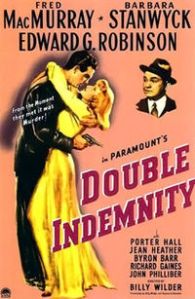Train Movies
I love trains. Not the way they are now but the way they used to be. People used to travel everywhere by train. There weren’t any jets yet and air travel was limited. It would take three days to go from New York to Los Angeles by train; it must have been a hot and exhausting trip, but what better way was there to see the country? Imagine going to sleep in your own little room on a train moving through the night with the landscape unfolding outside your window. What would we know about the romance of trains in today’s world if it wasn’t for the movies? Here is my list of movies in which trains play a significant part.
At the Circus (1938)
The Marx Brothers are with a circus that travels by train. Groucho sings “Lydia the Tattooed Lady” onboard the train. Watch for Harpo’s sneeze in the midget car. Look out!
Berth Marks (1929)
Stan Laurel and Oliver Hardy are a couple of bumbling (what else?) musicians in this early sound short. Due to a mix-up with a female passenger (who has a very jealous husband), they wreak havoc among the passengers on a train and end up being forced to share an upper berth for the night. (Oddly enough, it appears to be broad daylight throughout the entire proceedings.) They try to remove their clothes to go to sleep while confined to the berth, but of course it’s hopeless.
Double Indemnity (1944)
Fred McMurray is an insurance salesman and Barbara Stanwyck is bad news in 1940s Los Angeles. Fred sells Barbara’s husband an insurance policy and then the two of them hatch a plot to kill the husband. Fred pretends to be Barbara’s husband, who has a broken foot, and gets on a train (so there’ll be witnesses) and pretends to jump off the back of the moving train to commit suicide. Meanwhile, they’ve already killed Barbara’s husband. Edward G. Robinson is an insurance investigator who just doesn’t buy their story. Whoever heard of a person jumping off the back of a slow-moving train to commit suicide?
Some Like it Hot (1959)
Jack Lemmon and Tony Curtis are a couple of hapless musicians in 1929 Chicago who inadvertently witness the St. Valentine’s Day Massacre and are being pursued by vengeful gangsters. They disguise themselves as women and get jobs in an all-girl band and take a memorable train trip to Florida with Marilyn Monroe. The scene with Jack Lemmon and Marilyn in a berth on the train is one of the funniest ever.
Dr. Zhivago (1965)
The Russian revolution has made mincemeat of their lives. Doctor-poet Yuri Zhivago, his wife, son, and father-in-law flee Moscow by train to go to his wife’s family estate. Since Russian is such a big country, they’re on the train for an extended period in less-than-ideal traveling conditions with hundreds of other people. Lots of pretty scenery as the tragic story plays out.
Anna Karenina (1935)
In Imperial Russia, society lady Anna Karenina (played by Greta Garbo) causes a scandal when she leaves her dull husband for handsome Count Vronsky. Things do not go well for her. The classic “fallen woman” story. If you don’t know how the train figures into the story, you need to watch the movie, or, better yet, read the magnificent 850-page novel by Leo Tolstoy.
Murder on the Orient Express (1974)
In this film adaptation of an Agatha Christie novel, a tycoon (played by Richard Widmark) has been murdered on the glamorous Orient Express as it makes its way across Europe. There is a whole trainload of suspects, and it’s up to Belgian detective Hercule Poirot (played by Albert Finney) to find out who did it. Great cast including Anthony Perkins, Ingrid Bergman, Sean Connery, Vanessa Redgrave, and Lauren Bacall. Aces in all departments.
The Lady Vanishes (1938)
On a European train, a young woman named Iris Henderson befriends a friendly old woman named Miss Froy. After a while, Iris no longer sees Miss Froy on the train, and it seems that none of the other passengers have any recollection of Miss Froy ever being on the train. Did Iris just imagine Miss Froy, or is there something more sinister afoot? Something involving SPIES? This was one of Alfred Hitchcock’s best English films before he started making movies in America.
Shanghai Express (1932)
Marlene Dietrich and Anna May Wong are shady ladies on a train going across China with a group of disparate passengers, including a former boyfriend of Marlene’s (“They don’t call me Shanghai Lily for nothing.”). The passengers are caught up in political turmoil and the train is waylaid by a Chinese warlord. One of the best examples of classic cinematic art from Hollywood’s early Golden Age. Pure cinema.
Polar Express (2004)
Charming and beautifully photographed Christmas-themed animated movie about a boy who is just old enough to doubt the existence of Santa Claus. A train (the Polar Express) magically appears outside his house on a snowy night and takes him (along with other doubting children) on a special expedition to the North Pole to meet the real Santa. This movie should be a perennial holiday classic.
Strangers on a Train (1951)
Professional tennis player (played by Farley Granger) meets a charming playboy (Robert Walker) on a train and they exchange life stories. It seems the tennis player has a wife he’d rather do without and the playboy hates his father. The playboy suggests to the tennis player that they “swap” murders: the playboy will kill the tennis player’s wife and the tennis player will kill the playboy’s father. The tennis player thinks it’s a joke but the playboy is serious. Watch for the memorable scene in the amusement park where the tennis player’s wife meets her fate at the hands of the playboy. They don’t call Alfred Hitchcock the Master for nothing.
Copyright © 2011 by Allen Kopp

